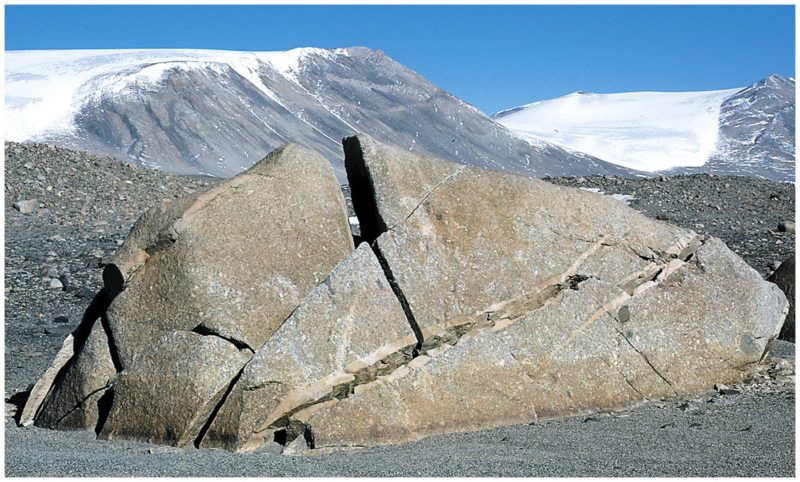Weathering of huge amounts of tiny rocks could be a means to reduce the greenhouse gases in the atmosphere. While this is normally a slow natural process during which minerals chemically bind CO2, technological upscaling could make this relevant for so-called negative emissions to help limit climate risks.

Yet, the CO2 reduction potential is limited and would require strong CO2 pricing to become economically feasible, according to the first comprehensive assessment of costs and possibilities now published in the journal Environmental Research Letters.
Weathering is the breaking down of rocks, soil, and minerals as well as wood and artificial materials through contact with the Earth’s atmosphere, water, and biological organisms.
“The Paris Agreement calls for a balance between anthropogenic greenhouse gas emissions by sources and removals by sinks in the second half of our century to keep global warming well below 2 degrees Celsius,” says lead-author Jessica Strefler from the Potsdam Institute for Climate Impact Research (PIK). “More than anything else this requires rapid and strong reductions of burning fossil fuels such as coal; but some emissions, for instance from industrial processes, will be difficult to reduce – therefore getting CO2 out of the air and storing it safely is a rather hot topic. The weathering of rocks, as dull as it might seem at first glance, is a scientifically exciting part of this.”
Hence the interest of assessing the economics of enhanced weathering for climate mitigation. Mining and grinding as well as transport and distribution were factored in. “Our calculations show that enhanced weathering could be competitive already at $60 per ton of CO2 removed for dunite, but only at $200 per ton of CO2 removed for basalt,” says Strefler. “This is roughly double of the carbon prices discussed in the current political debate, and substantially more than cost estimates for afforestation which are at 24 Euros per ton of CO2 removed. This is of course an important obstacle for any future implementation of enhanced weathering.”
India, Brazil, South East Asia, China seem to be the best suited locations
Strategies of carbon dioxide removal come with trade-offs. Planting huge numbers of trees to suck CO2 out of the air and store it in their trunks and branches for instance can come at the expense of land needed for food production. Also, carbon capture and underground storage (CCS) on an industrial scale is not accepted as safe by large parts of the population. Enhanced weathering, the spreading of rock material on land, may be easier to realise. However, dunite – the rock type most discussed amongst experts – contains harmful substances, such as chromium or nickel, that could get released during the process. This is why for the present study dunite is an important benchmark, but the researchers focus on basalt as a more sustainable option.
Current CO2 emissions are around 40 billion tons a year; natural weathering absorbs roughly 1.1 billion tons. Enhanced weathering could remove up to 4.9 billion tons per year if basalt is used, and up to 95 billion tons for dunite, according to the scientists’ calculations. It is likely, however, that in practice and considering all trade-offs, only a fraction of this potential could be realised. The best suited locations are warm and humid regions, particularly in India, Brazil, South East Asia, and China, where almost three quarters of the global potential could be realised. This is substantial, yet the uncertainties involved are also substantial, the scientists stress.
More than 3 billion tons of basalt needed to sequester one billion tons of CO2
“The annual potential of CO2 consumption is defined by the grain size and the weathering rate of the rocks used,” says Thorben Amann from Universität Hamburg’s Institute for Geology, Centre for Earth System Research and Sustainability (CEN), he is also lead-author of the study. To sequester one billion tons of CO2, more than 3 billion tons basalt would have to be spread, a mindboggling amount equal to almost half of the current global coal production. Grinding the rocks and spreading the powder over roughly one fifth of global cropland would be necessary, which is believed to be feasible, but – due to the gigantic amount of rocks involved – the costs eventually add up.
“We can say that Enhanced Weathering is not just a crazy idea but could actually help climate policy, yet it is still a challenge to get a precise understanding of the involved processes,” says Amann. “After all, there will be impacts on the agricultural soils, their properties will change, but this can also be beneficial. Basalt for example can actually supply certain nutrients to soils, acting as a natural fertiliser.”
The assessment shows that enhanced weathering especially of basalt rocks could be an attractive option to support climate change mitigation, especially for tropical and subtropical regions, where the CO2 uptake potential is the highest. Yet, given the costs and the mass of rocks that would need to be moved, it can likely provide only a small additional contribution.
